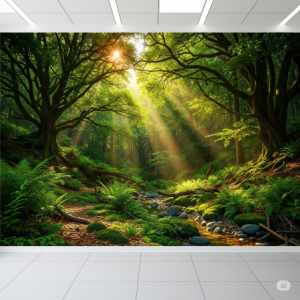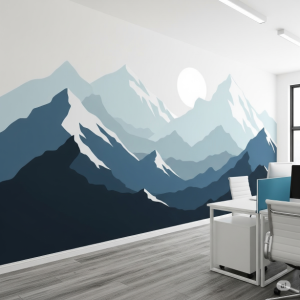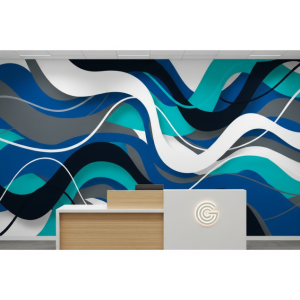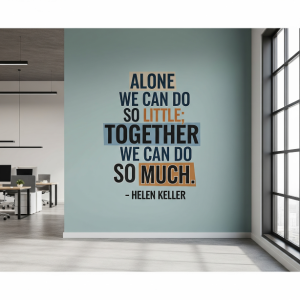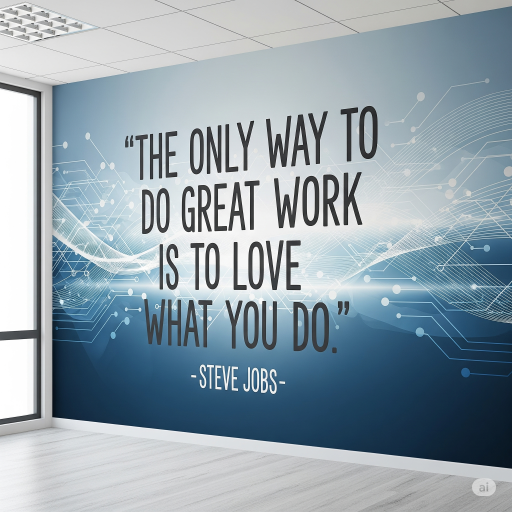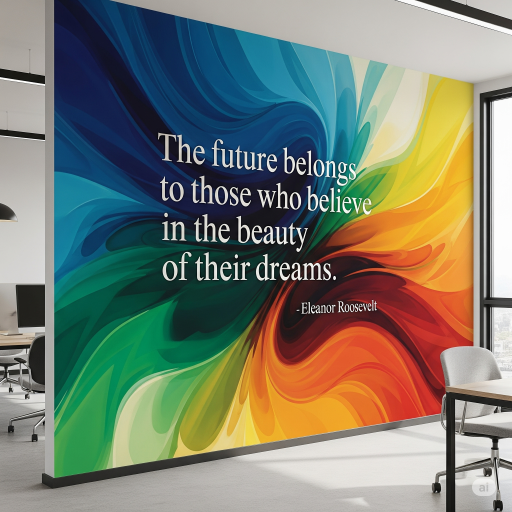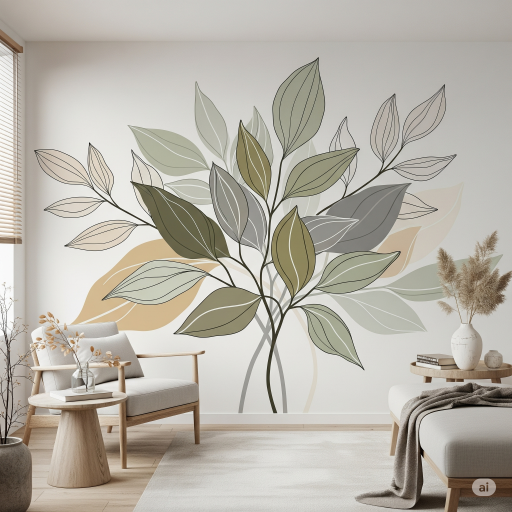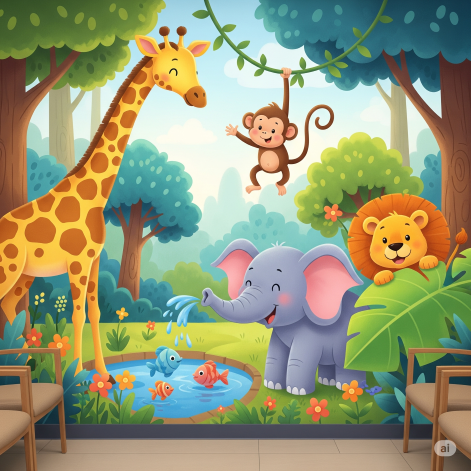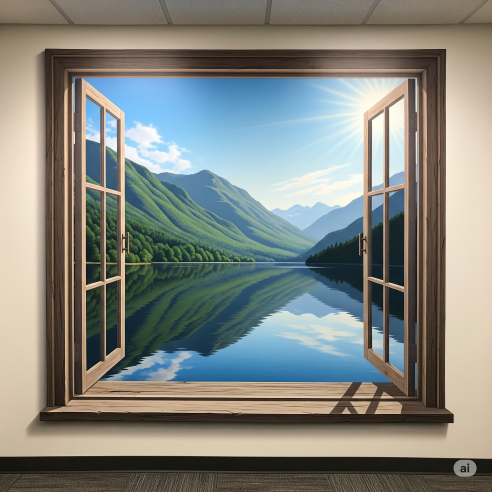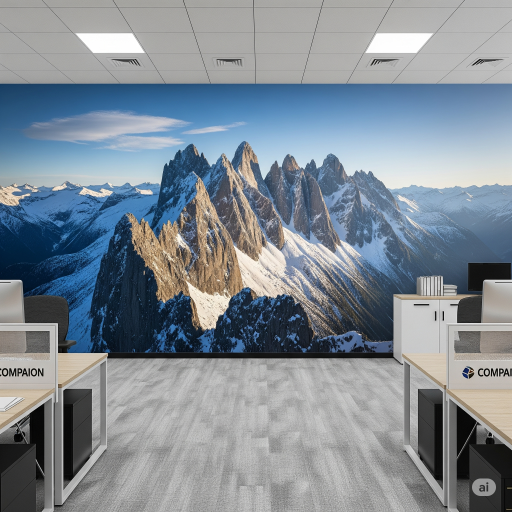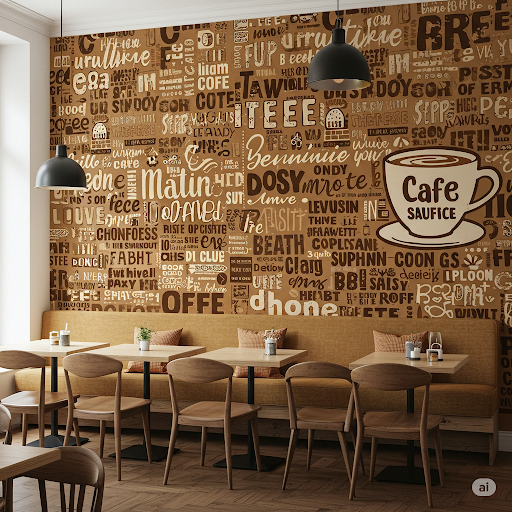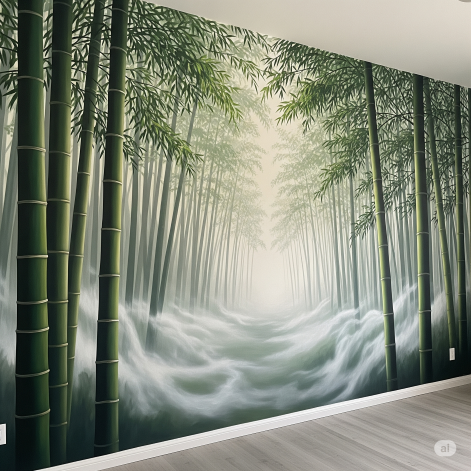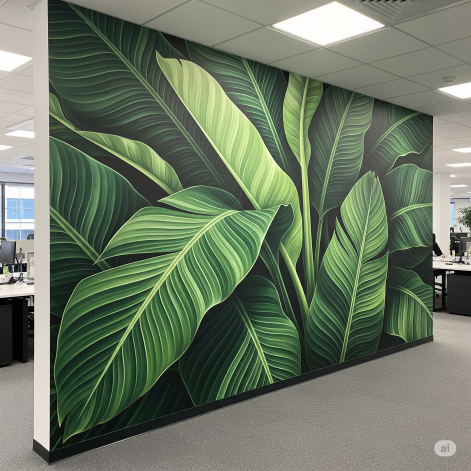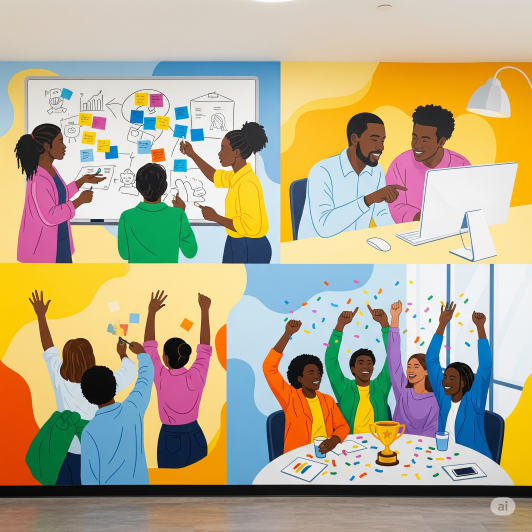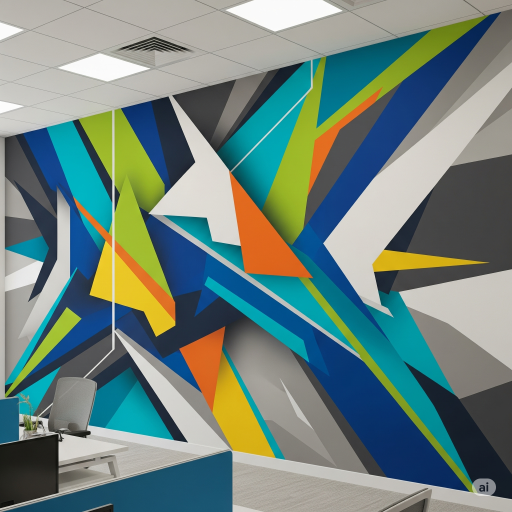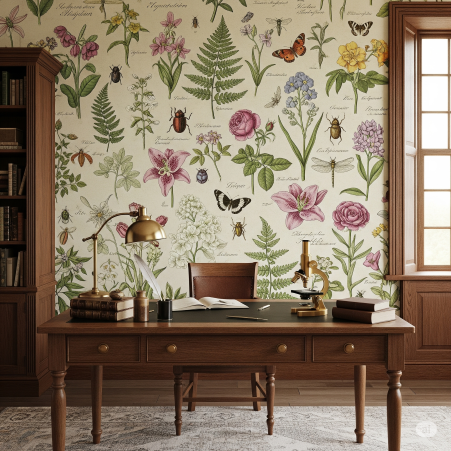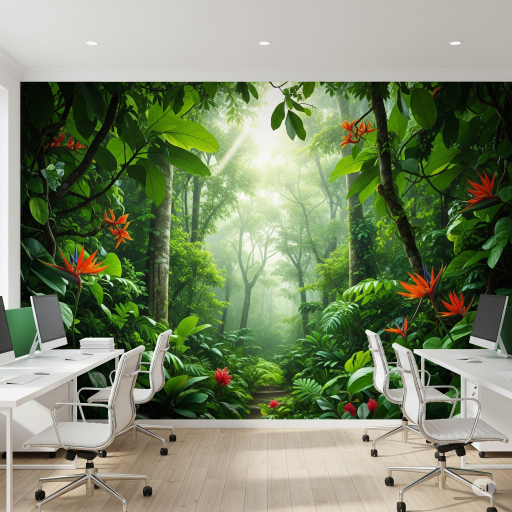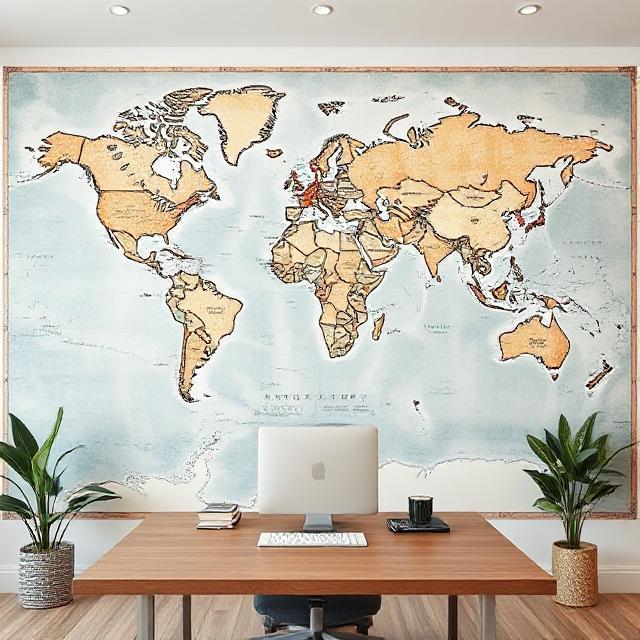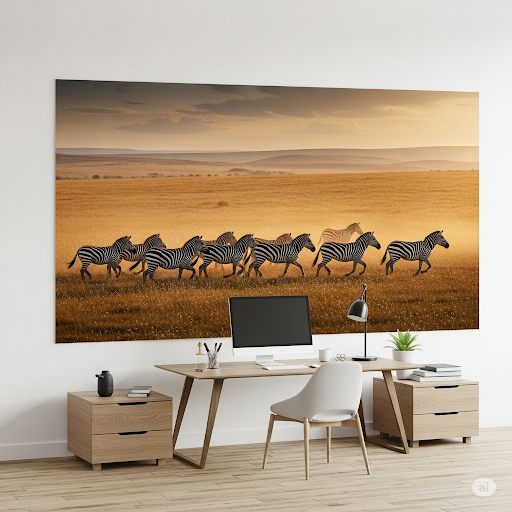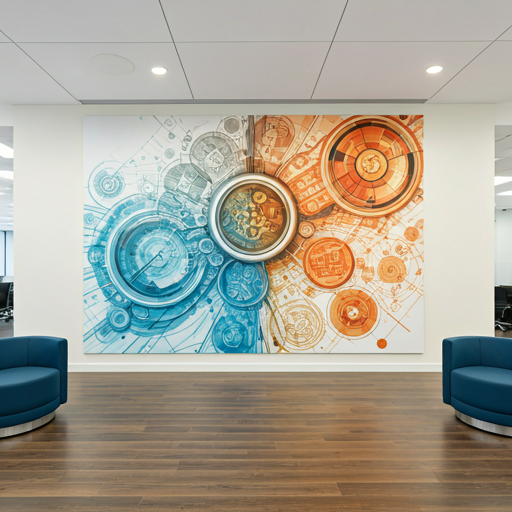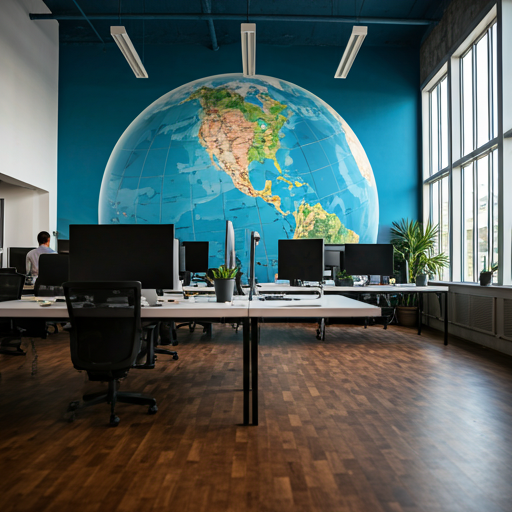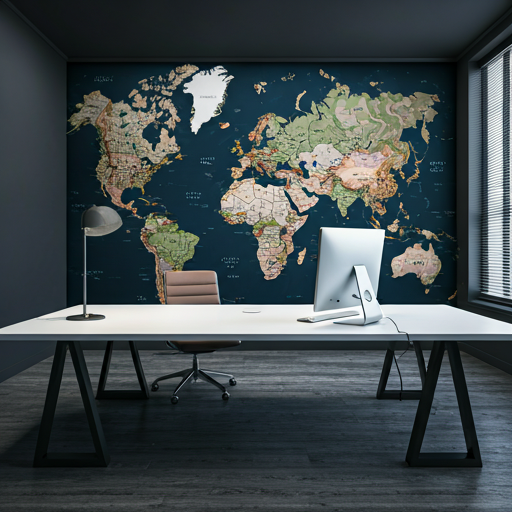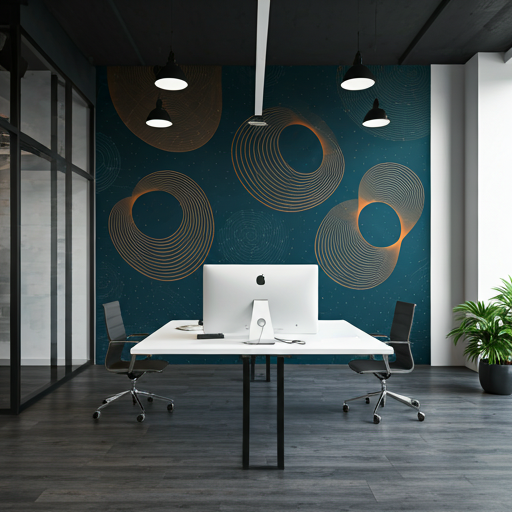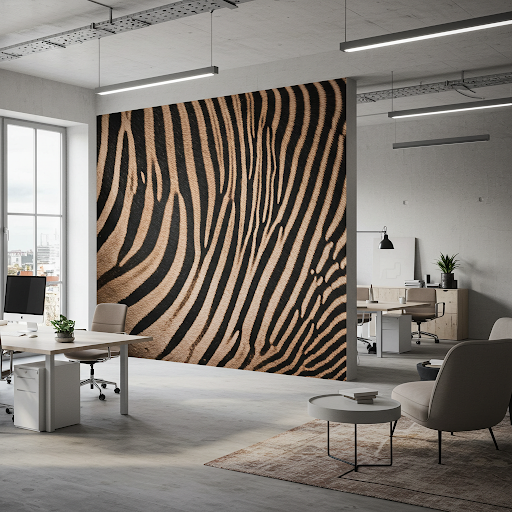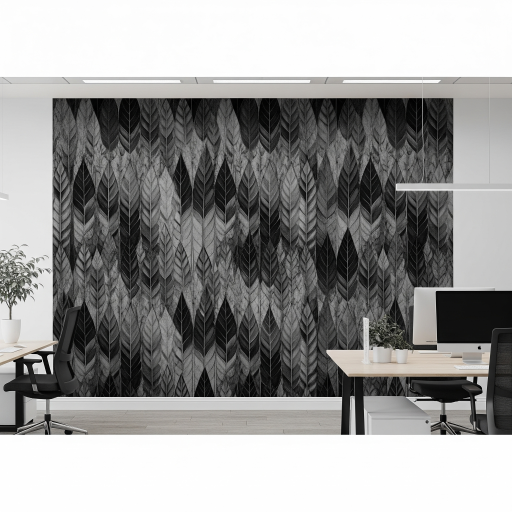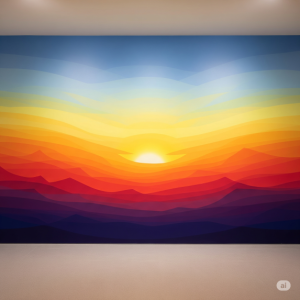Office mural art can be classified in several ways. But a common and practical approach is to categorize it by its stylistic approach and primary function within a corporate environment. Here are some key classifications and categories:
Office Mural Artistic Styles
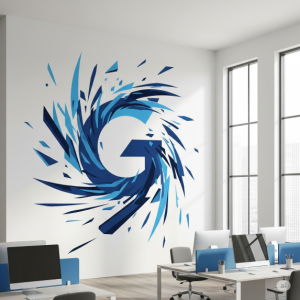
Artistic freedom and personalization are the cornerstones of modern office mural art. It is moving away from generic corporate visuals to bespoke, meaningful creations. Companies now recognize that a one-size-fits-all approach is ineffective for fostering a unique company culture.
This shift allows for a mural to be a true reflection of a company’s unique identity. Rather than just a logo, a mural can tell a visual story about a company’s journey, its founding principles, or its future aspirations.
Personalization also extends to the employees themselves. For instance, a tech company might commission a mural that visually represents its code or a specific project. Thus, it creates a sense of ownership and pride among the teams involved.

The artistic freedom inherent in murals also allows companies to explore a diverse range of styles. From abstract and biophilic to illustrative. They can be tailored to the specific function of a space. An energetic, abstract design might be perfect for a brainstorming room. But a calming, nature-inspired mural can transform a break room into a restorative sanctuary. This level of customization ensures the mural is not just art. It is a strategic tool for shaping the work environment and reinforcing brand values.
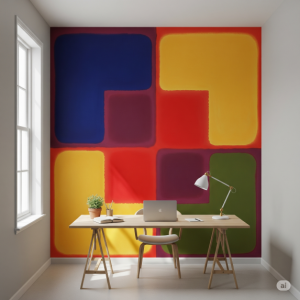
Abstract Office Mural Art
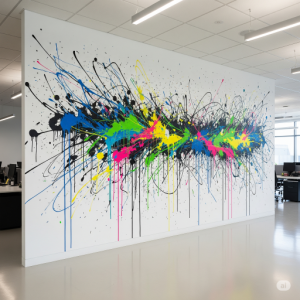
Abstract office mural art leverages non-representational elements like lines, shapes, and colors to create a powerful emotional impact in a workspace. Unlike representational art, which depicts recognizable objects, abstract murals focus on a visual language that can be interpreted in countless ways. This fosters a sense of creativity and open-mindedness. The style is particularly effective in modern offices, tech companies, and creative agencies where the goal is to inspire out-of-the-box thinking.
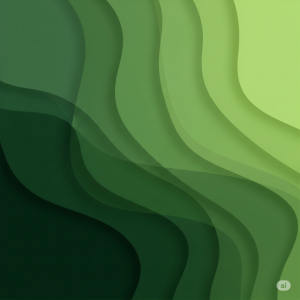
By using a vibrant color palette, dynamic compositions, or subtle, flowing textures, an abstract mural can transform a mundane wall into a source of energy, calm, or intellectual curiosity. The ambiguity of the art encourages employees and clients to engage with the space on a deeper, more personal level. Making it a unique and memorable feature of the office environment.
Realism
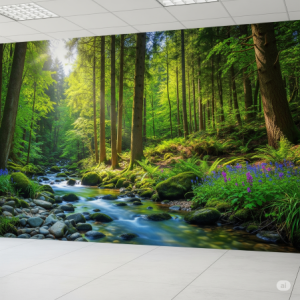
Realism in office murals offers a powerful way to bring a company’s narrative to life with stunning accuracy. This style meticulously depicts subjects to be as true-to-life as possible, creating a visually impactful experience. For a company in the manufacturing sector, a realistic mural might showcase the intricate details of a flagship product. Or the precise machinery on the factory floor, celebrating the craft and innovation behind the brand.
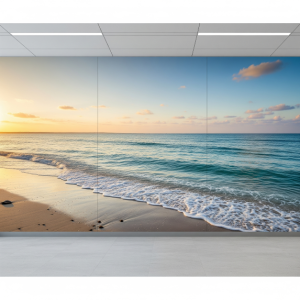
In contrast, a company with a strong connection to its community could use realism to capture local landmarks. Or historical events, grounding its identity in its roots. Similarly, an organization focused on sustainability might commission a hyper-realistic mural of a vibrant ecosystem. Or a pristine natural landscape, visually communicating its core values and inspiring a connection to the environment. The strength of realism lies in its ability to tell a clear, compelling story with a high degree of detail and emotional resonance.
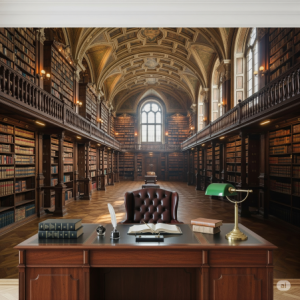
Geometric Office Mural Art
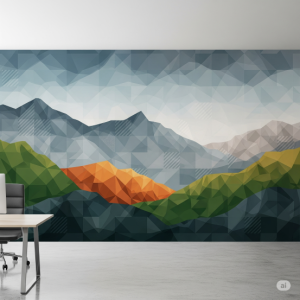
Geometric office murals bring energy and sophistication to professional spaces. Characterized by clean lines, bold shapes, and a balanced color palette, these murals create a sense of order and dynamic flow. They can be used to delineate different zones within an office, such as collaborative areas or quiet workspaces, while simultaneously fostering a stimulating and modern environment. This style adds a contemporary touch, inspiring creativity and a forward-thinking atmosphere.
Geometric office murals are defined by their use of precise lines, shapes, and patterns to create a clean, modern aesthetic. Unlike organic or realistic art, this style focuses on the deliberate arrangement of geometric forms like triangles, squares, circles, and polygons. This structured approach often conveys a sense of order, balance, and precision, making it an excellent choice for companies in tech, finance, or engineering, where these values are paramount.
Trompe-l’oeil
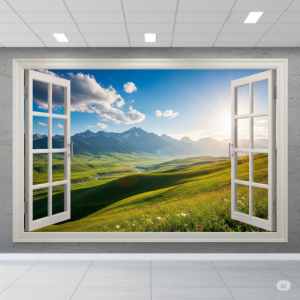
Trompe-l’oeil office murals use clever illusion to transform a workspace. By creating the convincing appearance of three-dimensional scenes, these murals can make a small office feel expansive. Or add a window where none exists. A trompe-l’oeil mural might feature a serene landscape seemingly visible through an archway. A library with shelves full of books. Or a bustling cityscape viewed from a balcony. This technique adds depth, character, and a touch of playful surprise. Thus making the office environment more visually engaging and less confined. It’s a powerful way to merge art and architecture. Creating a unique and memorable space that inspires both curiosity and conversation.
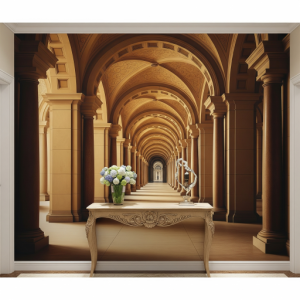
Advertising office mural art
Advertising office mural art is a dynamic tool for reflecting a company’s brand identity and creative ethos. These murals often feature bold, conceptual designs, witty slogans, or visual metaphors that speak directly to the nature of their work. A mural might depict a network of interconnected ideas. Or a visual timeline of iconic ad campaigns. As well as a vibrant abstract piece that embodies innovation.
By transforming a simple wall into a canvas for a brand’s mission, these murals inspire the creative teams who work there. And also leave a lasting impression on clients, showcasing a commitment to originality and bold thinking.
Ceramic mural art in Kenya
Ceramic office murals offer a unique and durable alternative to traditional painted murals. Made from individual tiles that are either hand-painted, glazed, or digitally printed, these murals create a striking, textured surface. The versatility of ceramics allows for a wide range of styles. From intricate mosaics and relief sculptures to seamless, large-format tile panels. This medium is particularly effective in high-traffic areas. Or spaces where easy maintenance is a priority, as ceramic is resistant to fading, scratches, and moisture. A ceramic mural adds a touch of bespoke artistry and permanence. Transforming a simple office wall into a lasting work of art.
Illustrative/Graphic Office Mural Art
This style uses a more stylized, hand-drawn, or graphic design approach. It can range from whimsical, cartoon-like characters to bold, infographic-style designs. These are perfect for telling a company’s story, displaying its values, or injecting a sense of personality and fun into the workspace.
Typographic office mural art
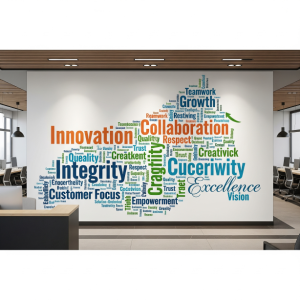
Typographic office murals elevate text from a simple communication tool into a powerful piece of art. By using fonts, lettering, and layout as the main visual elements, these murals are perfect for literally “writing on the wall” a company’s ethos. They can display a mission statement, core values, or a key inspirational quote in a way that is impossible to ignore.
The aesthetic impact of a typographic mural comes from the careful selection of fonts, colors, and composition. A minimalist design with a clean sans-serif font might convey a brand that is modern and straightforward. A mural with hand-painted or custom-lettered script could suggest a company that is creative and personal. The scale of the text, its placement on the wall, and the interplay between different letter styles can create a sense of movement, depth, and energy. These murals are a highly effective and direct way to reinforce brand identity, motivate employees, and make a lasting statement to anyone who enters the workspace.
Office Mural Art Content and Theme
Branding and Identity
Office murals focused on Branding and Identity are a powerful tool for reinforcing a company’s core principles. Rather than being a simple decorative element, these murals are a visual representation of the brand itself, turning a blank wall into a storytelling canvas.
This category includes designs that directly feature a company’s logo, often in a creative or artistic style that goes beyond standard signage. It can also tell a visual story of the company’s history. By using a timeline or a series of illustrations to depict key milestones, founders, and moments of growth.
Additionally, these murals can be an artistic depiction of a company’s mission statement or core values. By transforming abstract concepts like “innovation,” “collaboration,” or “sustainability” into tangible, inspiring imagery. And by creating a branded environment, these murals help to align employees with the company’s purpose and make a strong, memorable statement to clients and visitors about what the organization stands for.
Biophilic office mural art
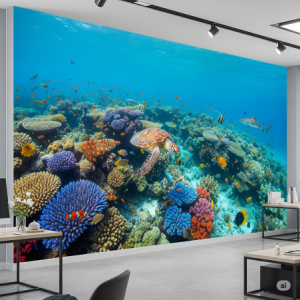
Biophilic office mural art is a design approach that leverages the human innate connection to nature to create more calming and restorative environments. These murals go beyond simple decoration, acting as a visual escape that can significantly impact employee well-being. By incorporating realistic or stylized depictions of natural elements like lush forests, tranquil oceans, majestic mountains, or intricate botanical patterns, they introduce the positive effects of nature into a built environment.
The goal is to reduce stress, enhance cognitive function, and promote a sense of peace, thereby increasing productivity and overall well-being in the workplace. This can be particularly effective in urban settings where access to natural landscapes is limited. Whether through a vibrant, full-wall landscape or a more subtle, patterned design inspired by leaves and flowers, biophilic murals create a more harmonious and health-conscious atmosphere that benefits everyone who inhabits the space.
Storytelling/Narrative

Storytelling/Narrative murals are a dynamic and engaging category of office art, transforming walls into visual chronicles. These murals are designed to do more than decorate. They tell a compelling story, whether it’s a company’s humble beginnings and key milestones, a step-by-step depiction of how a product is made, or a celebration of the community it serves. By using imagery, symbols, and artistic timelines, these murals make a company’s journey and purpose tangible. They are powerful internal tools for fostering a sense of shared history and purpose among employees. And serve as an inspiring external statement to clients and visitors, showcasing the company’s identity and values in a memorable and meaningful way.
Wayfinding office murals
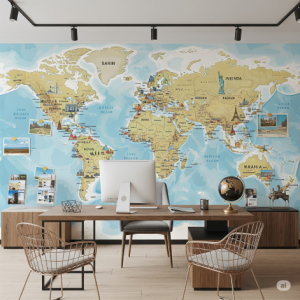
While less of an “art” style, this is a functional wayfinding category where murals are used to help people navigate a large office space. They can be painted with arrows, icons, or visual landmarks to guide people to different departments or areas.
These categories are not mutually exclusive; a single mural can often fall into multiple categories, for example, an abstract mural that is also a branded piece, or a storytelling mural that uses an illustrative style. The choice of category depends on the company’s goals for the space and the message they want to convey.
Office Ceiling Mural Art
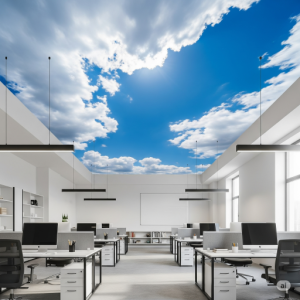
Office ceiling mural art is a captivating and often overlooked aspect of interior design, turning the “fifth wall” into a focal point. While murals are a common sight, ceiling murals can create a unique and immersive experience that draws the eye upward and completely transforms a space.
Common themes for office ceiling mural art include:
Sky and Nature
This is perhaps the most popular category. Murals of clear blue skies, fluffy clouds, star-filled night skies, or lush tree canopies can create a sense of openness, tranquility, and connection to the outdoors, which can be particularly valuable in a busy, indoor office environment.
Geometric and Abstract Patterns
The geometric and abstract office ceiling murals use bold lines, shapes, and colors to create a modern and dynamic look. A geometric ceiling mural can add a sense of order, structure, and forward-thinking design to a space, making it ideal for a tech or design-oriented company.
Classical and Architectural
Drawing inspiration from historical masterpieces like the frescoes in the Sistine Chapel, these murals can create a sense of grandeur and sophistication. Classical ceiling murals feature ornate patterns, faux architectural details like domes or arches, or classical figures, adding a luxurious and timeless feel to a reception area or a formal conference room.
Branded and Storytelling
A ceiling can also be used to reinforce a company’s brand identity. This could be done through a subtle, artistic rendition of the company logo. Or through a visual narrative that tells the story of the brand’s history and values.
The medium for these murals can range from traditional hand-painted artwork to digitally printed wallpaper. The choice of style and medium depends on the desired atmosphere, the company’s brand, and the overall design of the office.
